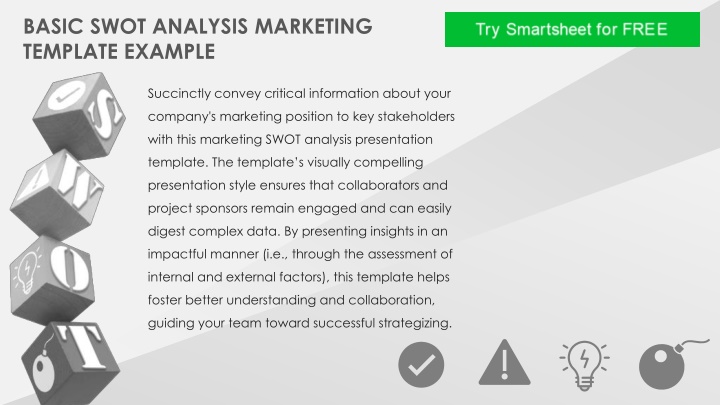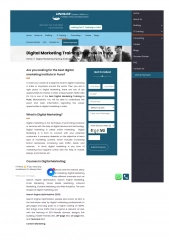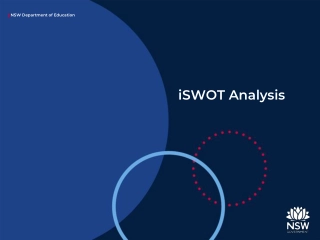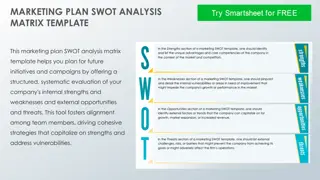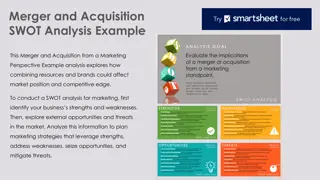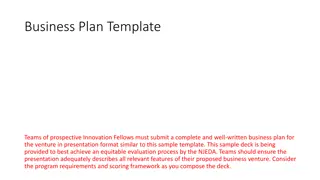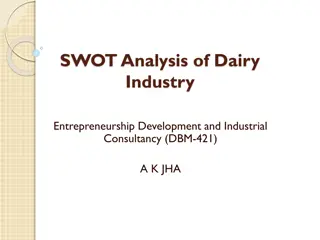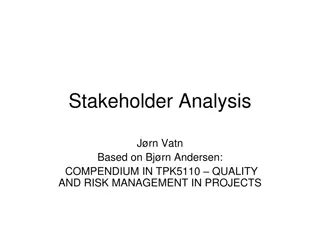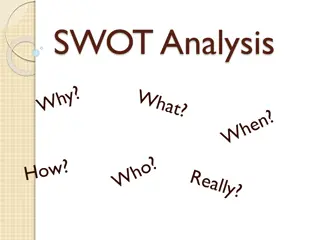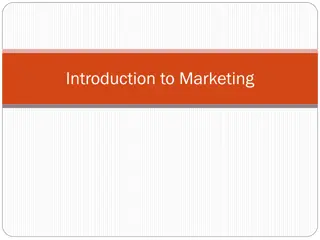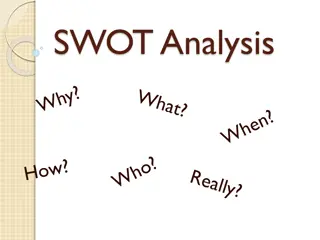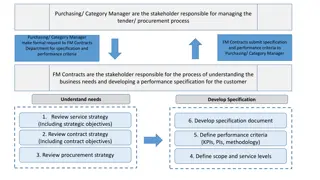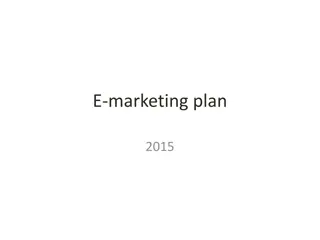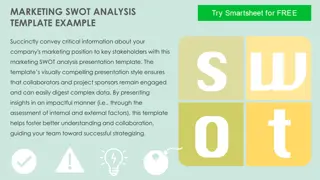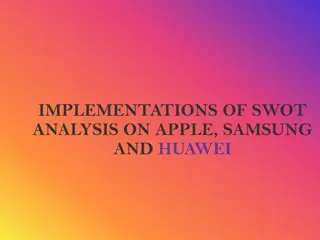Marketing SWOT Analysis Template - Key Stakeholder Insights
This marketing SWOT analysis template helps convey critical information about your company's marketing position to key stakeholders. Identify strengths, weaknesses, opportunities, and threats to guide successful strategizing in a visually compelling presentation style. Explore internal and external factors impacting your marketing position for better collaboration and decision-making.
Download Presentation

Please find below an Image/Link to download the presentation.
The content on the website is provided AS IS for your information and personal use only. It may not be sold, licensed, or shared on other websites without obtaining consent from the author.If you encounter any issues during the download, it is possible that the publisher has removed the file from their server.
You are allowed to download the files provided on this website for personal or commercial use, subject to the condition that they are used lawfully. All files are the property of their respective owners.
The content on the website is provided AS IS for your information and personal use only. It may not be sold, licensed, or shared on other websites without obtaining consent from the author.
E N D
Presentation Transcript
BASIC SWOT ANALYSIS MARKETING TEMPLATE EXAMPLE Succinctly convey critical information about your company's marketing position to key stakeholders with this marketing SWOT analysis presentation template. The template s visually compelling presentation style ensures that collaborators and project sponsors remain engaged and can easily digest complex data. By presenting insights in an impactful manner (i.e., through the assessment of internal and external factors), this template helps foster better understanding and collaboration, guiding your team toward successful strategizing.
SWOT ANALYSIS CONDUCTED FOR: Positive Charge INTERNAL FACTORS STRENGTHS + WEAKNESSES In the Strengths section of a marketing SWOT template, one should identify and list the unique advantages and core competencies of the company in the context of the market and competitors. In the Weaknesses section of a marketing SWOT template, one should pinpoint and detail the internal vulnerabilities or areas in need of improvement that might impede the company's growth or performance in the market. Pioneering Technology: Advanced and efficient EV- charging technology that sets us apart from competitors. Wide Network: An extensive network of charging stations across strategic locations. Eco-Friendly Initiatives: Commitment to sustainable practices, boosting brand image among eco-conscious consumers. User-Friendly Interface: Intuitive and easy-to-use mobile application for seamless charging experiences. Strong Partnerships: Collaborations with key industry players and municipalities for better reach and accessibility. Limited Brand Awareness: Not yet widely recognized compared to long-standing competitors. Infrastructure Investment: Initial high costs associated with setting up new charging stations. Dependency on Tech: Heavy reliance on mobile app performance, potentially alienating non-tech-savvy users. Regional Limitations: Predominant presence in urban areas, with limited stations in rural regions. Service Speed: Charging speeds that may not be competitive with the fast-charging solutions currently on the market.
SWOT ANALYSIS CONDUCTED FOR: Positive Charge EXTERNAL FACTORS OPPORTUNITIES + THREATS In the Opportunities section of a marketing SWOT template, one should identify external factors or trends that the company can capitalize on for growth, market expansion, or increased revenue. In the Threats section of a marketing SWOT template, one should list external challenges, risks, or barriers that might prevent the company from achieving its goals or might adversely affect the firm s operations. Rising Demand: The global shift toward EVs signifies a growing demand for charging infrastructure. Partnerships: Potential collaborations with businesses (like malls or restaurants) to install charging stations, offering mutual benefits. Innovation: Development of faster charging technologies or green charging solutions powered by renewable energy. Expansion: Penetrating underserved markets or regions with limited EV-charging options. Government Incentives: Leveraging tax breaks or grants meant for green initiatives or infrastructure development. Competition: New EV-charging companies or established players that are expanding their networks. Technological Advancements: Rapid changes in EV- charging technology that may render existing stations obsolete. Regulatory Changes: Potential legal or regulatory constraints related to EV infrastructure or energy consumption. Infrastructure Limitations: Constraints in power grids or local infrastructure that could hinder expansion. Economic Fluctuations: Economic downturns that might slow the growth of the EV market, impacting charging demand.
DISCLAIMER Any articles, templates, or information provided by Smartsheet on the website are for reference only. While we strive to keep the information up to date and correct, we make no representations or warranties of any kind, express or implied, about the completeness, accuracy, reliability, suitability, or availability with respect to the website or the information, articles, templates, or related graphics contained on the website. Any reliance you place on such information is therefore strictly at your own risk.
